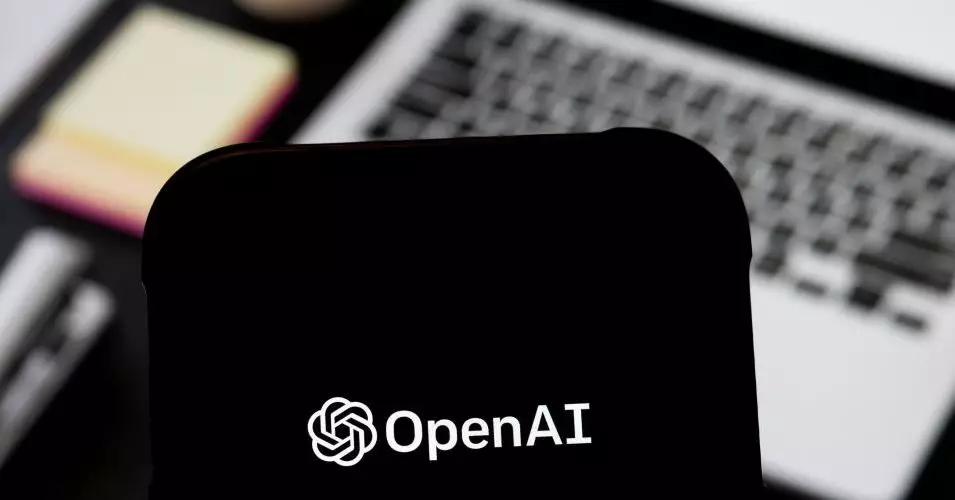In an exciting revelation, Sam Altman, CEO of OpenAI, announced that the company will soon be unveiling a powerful open-weight artificial intelligence model. This strategic decision marks OpenAI’s pivot towards a more accessible and collaborative approach to artificial intelligence, putting them back in the competitive arena alongside companies like DeepSeek and Meta. The anticipated release is not merely a response to the success of rivals but signifies a broader shift in how AI models will be developed and utilized moving forward.
The announcement underscores the changing narrative around AI. Until recently, the industry felt heavily inclined toward proprietary models, with companies guarding their technologies like state secrets. However, Altman’s acknowledgment of being “on the wrong side of history” signals a more enlightened perspective: that open collaboration may be the key to unlocking AI’s transformative potential. It appears that OpenAI recognizes the importance of fostering an environment where innovation can thrive through community engagement and open-source practices.
The Financial Incentives of Open-Weight Models
One prominent advantage of open-weight AI models is their cost-effectiveness. DeepSeek’s R1, for instance, was trained at a fraction of the cost typically associated with developing large-scale AI models. This revelation poses a challenge to traditional models, raising questions about resource allocation in AI development. OpenAI’s commitment to releasing an open-weight model signifies an acknowledgment of this new economic landscape. By making their model open, OpenAI not only enhances accessibility but also empowers developers and researchers around the world to engage more actively in AI experimentation.
The implications of this move are profound. Open-weight models can appeal to a wider audience, allowing individuals and organizations with limited resources to customize and optimize AI technology for specific applications. These models also cater to sensitive environments, where private data handling is crucial. The shift represents an important step toward democratizing AI, illuminating a path for innovation that aligns with societal needs and ethical considerations.
Ensuring Responsible AI Deployment
While the excitement surrounding open-weight models is palpable, it is critical to recognize the associated risks. OpenAI’s commitment to rigorous testing underscores an awareness of these dangers. Concerns raised by researchers about the misuse of open models for cyberattacks and other malicious activities are valid, and OpenAI’s Preparedness Framework reflects a conscientious strategy intended to mitigate these threats.
Altman and his team are aware that the introduction of open-weight models could encourage unethical applications. This awareness leads to the necessity of conducting thorough evaluations to ensure safety in their designs. The goal is not merely to unleash technology but to do so responsibly, actively engaging with the ethical implications of AI deployment in complex environments. The technology must be accompanied by a broader dialogue about its potential ramifications on society.
A Call to the AI Community
In conjunction with the model release, OpenAI is fostering an environment of collaboration through outreach initiatives. Altman’s mention of hosting events for developers with early prototypes provides a platform for feedback and iteration, key components in the design thinking process. By inviting developers to participate in early testing, OpenAI is cultivating a dialogical relationship with its user base, which ultimately enhances the model’s pertinence to real-world applications. This move is not merely a marketing strategy; it’s a genuine effort to enhance the AI ecosystem.
The open-source ethos can only benefit from such an engaged community, potentially yielding ideas that further refine and improve the technology. As researchers and developers bring their expertise and unique perspectives to the table, the likelihood of innovation skyrockets. This collaborative spirit reflects a fundamental understanding that the best solutions often arise from diverse inputs and concerted efforts—principles that resonate deeply within the tech community.
Navigating the Future of Open AI
As OpenAI races to launch an open-weight model, the AI landscape is poised for transformation. This innovative approach emphasizes a future not just of technological advancement but also of ethical considerations, community-based innovation, and economic inclusivity. The actions of today could redefine the standards and practices within the AI domain, setting a precedent for others to follow. And as the world watches, it remains to be seen how OpenAI will navigate the complexities of open models while fostering a safer, more inclusive AI environment.

